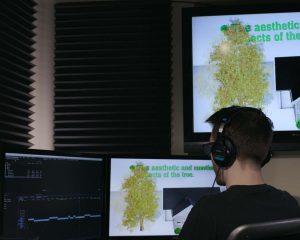[vc_row][vc_column][vc_column_text]
Organization. It seems incredibly boring. And it is… But it’s important if you’re hoping to get your project edited on time (and when you need to come back 12 months later for a revision, good luck trying to figure out what whether “projectX-FINAL” or “projectX-final-revised V2” is the sequence you should be working from).
At Mosher Media, we have fairly specific workflow guidelines for how footage and projects in general should be organized. This may seem like it would slow an editor down, and at least at the beginning of the project it can, but it’s time that ‘ll be made up two-fold over the course of an edit. And it’s important that everyone in our organization follows the same workflow so editors can jump into the middle of a project without having to spend half a day getting acquainted with the project.
Our workflow is based on using Mac OSX but could easily be adapted to a Windows workflow without too much trouble.
The first thing we do when we get back from a shoot create a folder for the project. It’s important that any and all assets used for the project are included in here so if the project gets moved to a different workstation, we don’t have to find and reconnect media. The name of the project is important, and for us, a project folder’s name contains four things. The project number, the client name, the project name, and the date. If the name doesn’t contain these four things, you’re doing it wrong.
The project folder should contain the following folders (this can vary slightly depending on the needs of the project):
- Assets
- Audio
- Exports
- Footage
- Graphics
- Music
- Scripts
- Stills
Most of these folders are fairly straightforward but assets are for any stills or video provided by the client while the footage and stills folder is for images that we’ve shot.
Depending on the complexity of the project most of these folders will contain sub-folders as well. Footage may be divided up by A-Camera and B-Camera, shoot date, or location and Exports will contain folders for masters, web, and deliverables.
So now that we’ve got our folder structure set up, we can start importing the footage. It’ll go into a raw subfolder of Footage.
Once all of the footage is ingested into the system we can start transcoding to ProRes. We typically use ProRes 422. Even though Premiere Pro is capable of editing footage from any of our cameras, we find its faster to transcode everything to ProRes first, edit in a ProRes timeline, and export to a ProRes master file. Using the Match Sequence Settings and Use Previews settings in the Premiere Pro export window allows us to export our projects much faster versus doing a full render on export.
Once everything is finished transcoding, the footage is ready to be named and organized. We like our names to be descriptive of the file even viewed out of context. That means client, camera, and shot name should all be in the file name.
Correct: Davey-5D-Downtown BRoll 05
Incorrect: Downtown BRoll 05
This helps when searching through archive clips later on so that the editor can recognize what the clip contains even without opening it.
On Mac OSX, Automator is a pre-installed program that can help batch renaming of clips. Choose workflow, rename finder items, make sequential and you’ll be able to rename hundreds of clips in a matter of minutes.
Once everything is named, we’re finally ready to import the clips into Premiere Pro and start editing.
[/vc_column_text][/vc_column][/vc_row]


